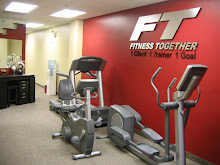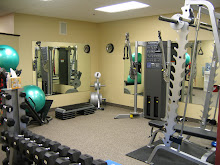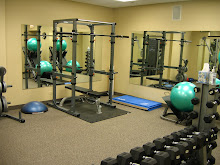How to enjoy a drink without declaring war on your diet
By Elaine Magee, MPH, RD WebMD
By Elaine Magee, MPH, RD WebMD
Weight Loss Clinic - Expert Column edited by Fitness Together Lake Forest
Reviewed By Kathleen Zelman, MPH, RD/LD
If women say, "This dessert is going straight to my hips," men should say, "This beer is going straight to my belly."
That's because it's difficult for your body to use alcohol calories for energy. Which means -- watch out! -- those calories usually get turned into fat. A gram of alcohol is worth 7 calories, compared with a gram of protein or carbohydrate, worth 4 calories each.
So what's a beer-drinking or wine-sipping weight-conscious person to do? How can you walk through the alcohol minefield without blowing up your healthful intentions?
•Consider alcohol beverages weekly -- and moderate -- "treats" instead of a daily ritual.
•Eat before imbibing. You'll be less likely to over-consume and as the meal's protein and carbs are used as energy the negative metabolic effects of the empty alcohol calories are moderated.
•Make better beverage choices. Choose certain beers, wines, and other drinks, and you can minimize the carb and alcohol calories coming from your cocktail.
100 Bottles of Beer on the Wall
Take your pick: want fewer calories or fewer carbohydrate grams? Non-alcoholic beers have fewer calories than light beers but "light" beers have fewer carb grams and "low-carb beers" fewer still (averaging 95 calories and 2.6 grams of carbohydrates). Choose either kind of brew and you're ahead of regular beer drinkers, who imbibe 140 calories and 13 grams of carbohydrates with every bottle or can. Check out the carb and calorie stats below.
Non-Alcoholic Beers
There are two domestic and two import non-alcoholic beers available. My husband says the imports seem to have more flavor, but the domestic beers are good, too.
Beer (12 oz) Calories Carbohydrate (g)
O'Doul's 79 13.3
Sharps >58 12.1
Clausthaler non-alcoholic 89 18.8
St. Pauli N.A. n/a n/a
Light Beers
American beer makers seem to be into the "light" beer act these days. Which one tastes best? My guess is if you like Coors you'll probably like Coors Light, and if you're a Bud imbiber, you'll probably like Bud Light best. Check out the difference in calories and carbs below.
Beer (12 oz) Calories Carbohydrate (g)
Coors Light 102 5
Miller Lite 96 3.2
MGD Miller Genuine Draft Light n/a n/a
Bud Light n/a n/a
Wine contributes few carbs but around 160 calories per cup, with only sweet dessert wines tipping the scales in both calories and carbs. One way to make your one delicious cup of wine last longer is to make a spritzer by blending wine with an equal amount of seltzer, club soda, or diet 7 UP. Purists, of course, can simply sip theirs as is, or enjoy it with a meal.
Wine (1-cup) Calories Carbohydrate (g)
Dry White Wine 158 1.5
Medium White Wine 160 1.9
Red Wine 170 4
Sweet Dessert Wine 362 28
Reviewed By Kathleen Zelman, MPH, RD/LD
If women say, "This dessert is going straight to my hips," men should say, "This beer is going straight to my belly."
That's because it's difficult for your body to use alcohol calories for energy. Which means -- watch out! -- those calories usually get turned into fat. A gram of alcohol is worth 7 calories, compared with a gram of protein or carbohydrate, worth 4 calories each.
So what's a beer-drinking or wine-sipping weight-conscious person to do? How can you walk through the alcohol minefield without blowing up your healthful intentions?
•Consider alcohol beverages weekly -- and moderate -- "treats" instead of a daily ritual.
•Eat before imbibing. You'll be less likely to over-consume and as the meal's protein and carbs are used as energy the negative metabolic effects of the empty alcohol calories are moderated.
•Make better beverage choices. Choose certain beers, wines, and other drinks, and you can minimize the carb and alcohol calories coming from your cocktail.
100 Bottles of Beer on the Wall
Take your pick: want fewer calories or fewer carbohydrate grams? Non-alcoholic beers have fewer calories than light beers but "light" beers have fewer carb grams and "low-carb beers" fewer still (averaging 95 calories and 2.6 grams of carbohydrates). Choose either kind of brew and you're ahead of regular beer drinkers, who imbibe 140 calories and 13 grams of carbohydrates with every bottle or can. Check out the carb and calorie stats below.
Non-Alcoholic Beers
There are two domestic and two import non-alcoholic beers available. My husband says the imports seem to have more flavor, but the domestic beers are good, too.
Beer (12 oz) Calories Carbohydrate (g)
O'Doul's 79 13.3
Sharps >58 12.1
Clausthaler non-alcoholic 89 18.8
St. Pauli N.A. n/a n/a
Light Beers
American beer makers seem to be into the "light" beer act these days. Which one tastes best? My guess is if you like Coors you'll probably like Coors Light, and if you're a Bud imbiber, you'll probably like Bud Light best. Check out the difference in calories and carbs below.
Beer (12 oz) Calories Carbohydrate (g)
Coors Light 102 5
Miller Lite 96 3.2
MGD Miller Genuine Draft Light n/a n/a
Bud Light n/a n/a
Wine contributes few carbs but around 160 calories per cup, with only sweet dessert wines tipping the scales in both calories and carbs. One way to make your one delicious cup of wine last longer is to make a spritzer by blending wine with an equal amount of seltzer, club soda, or diet 7 UP. Purists, of course, can simply sip theirs as is, or enjoy it with a meal.
Wine (1-cup) Calories Carbohydrate (g)
Dry White Wine 158 1.5
Medium White Wine 160 1.9
Red Wine 170 4
Sweet Dessert Wine 362 28









No comments:
Post a Comment